NASA’s Dawn spacecraft has acquired its latest and closest-yet snapshot of the mysterious dwarf planet world Ceres. These latest images, taken on Feb. 4, from a distance of about 90,000 miles (145,000 km) clearly show craters – including a couple with central peaks – and a clearer though still ambiguous view of that wild white spot that has so many of us scratching our heads as to its nature.
Get ready to scratch some more. The mystery spot has plenty of company.
Take a look at some still images I grabbed from the video which NASA made available today. In several of the photos, the white spot clearly looks like a depression, possibly an impact site. In others, it appears more like a rise or mountaintop. But perhaps the most amazing thing is that there appear to be not one but many white dabs and splashes on Ceres’ 590-mile-wide globe. I’ve toned the images to bring out more details:
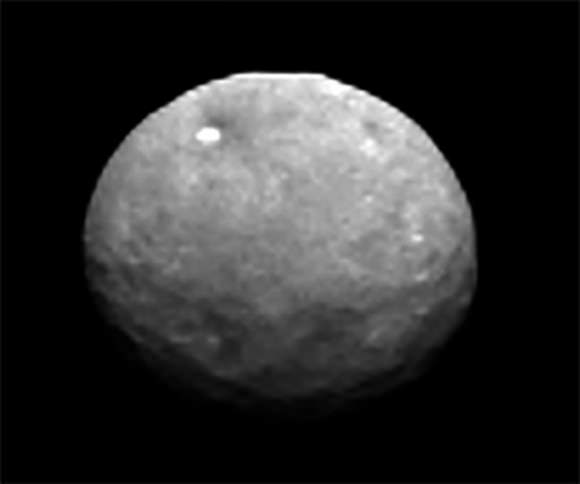
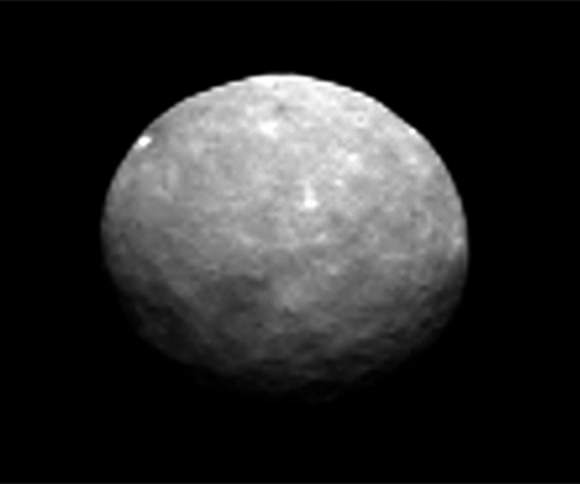
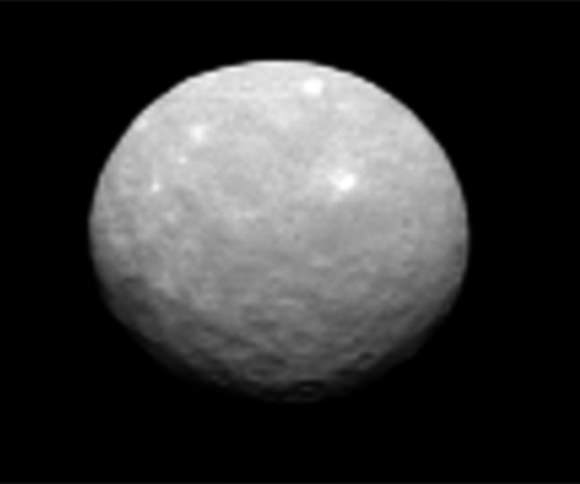
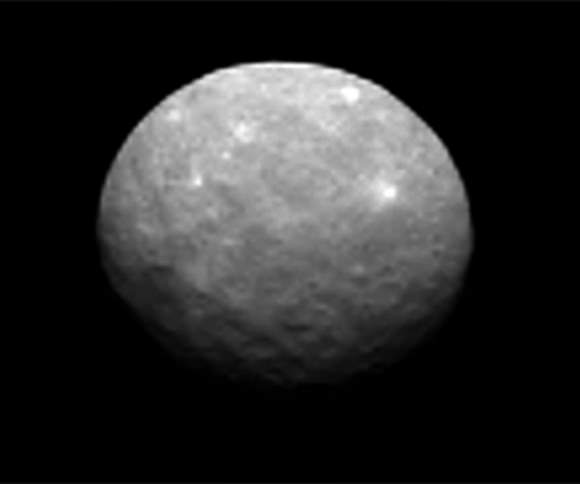
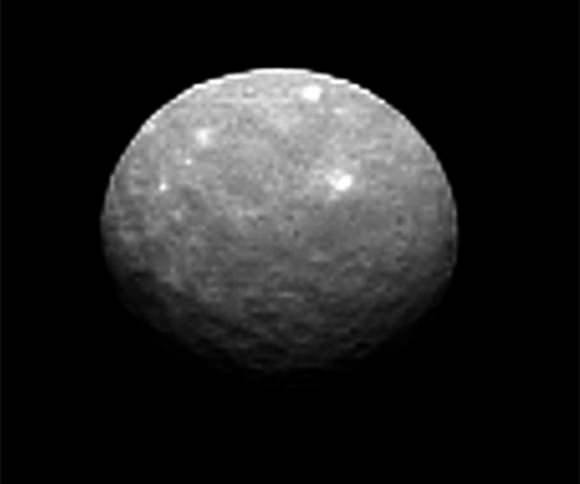
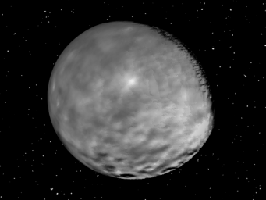
Now let’s take a look at an additional NASA animation of Ceres made using processed images. As the spot first rounds the limb it looks like a depression. But just before it disappears around the backside a pointed peak seems to appear. Intriguing, isn’t it?

